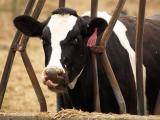Uganda became the latest country to report suspected H5N8 outbreaks, as countries in many parts of Europe already affected by the virus reported fresh detections in wild birds and poultry, according to the latest reports from the World Organization for Animal Health (OIE).
Uganda probes outbreaks on Lake Victoria shores
In separate reports yesterday, Uganda's agriculture ministry reports two highly pathogenic H5 outbreaks in wild birds and an outbreak in poultry. If confirmed as H5N8, Uganda would be the third African nation affected by the outbreak, following early detections in Tunisia and Nigeria.
The H5 outbreaks in Uganda struck wild ducks and birds along the shores and islands of Lake Victoria in Masaka and Wakiso districts in the southwestern part of the country. Between the two events, which began on Jan 2, the virus killed 1,200 birds.
In a second report, health officials said H5 was detected in village poultry in Masaka district, killing 7 of 30,000 birds and sickening 20 more. They said the source of the outbreak was contact with wild species.
"In Masaka alone, wild and domestic birds are dying at alarming numbers, and in Lutembe wetland, white-winged terns are the ones dying," officials said in the OIE statement.
"This is already a big threat to over 30 million domestic poultry in Uganda, which calls for an urgent response to control the spread of the disease from wild birds to domestic birds."
More H5N8 in Europe
Several European countries that have already detected H5N8 in wild birds and poultry reported further spread of the virus, according official reports:
- France reported two more detections in wild birds and 34 more outbreaks involving poultry. The wild bird outbreaks involved mute swans and mallards in Ain and Lot-et-Garonne departments in southern France. Between Jan 6 and Jan 12 authorities found five dead birds between the two locations. The poultry outbreaks occurred between Dec 31 and Jan 10, killing 2,080 of 249,550 birds in four provinces in southwestern France: Landes (17), Gers (15), Deux-Sevres (1), and Hautes-Pyrenees (1).
- Germany on Jan 13 reported six more H5N8 outbreaks in a variety of settings, with start dates ranging from Jan 2 to Jan 10. One was at a zoo housing 453 birds in Saxony-Anhalt, but deaths were only reported in a swan and an emu. Outbreaks affected poultry in North Rhine-Westphalia, Bavaria, and Brandenburg state, as well as a wild bird in Brandenburg state.
- Czech Republic officials on Jan 14 reported four more outbreaks in backyard poultry in the central and southern part of the country. The events began between Jan 6 and Jan 9, killing 17 of 791 susceptible geese, ducks, hens, ostriches, Guinea fowl, and pigeons.
- Russia reported H5 detections in two separate reports. One described two events in Krasnodar Krai in the far southwestern part of the country that began on Jan 1 and Jan 5, killing 122 mute swans between the two locations. The other described three outbreaks on poultry farms, one in Krasnodar Kray housing geese and ducks and two in neighboring Rostov oblast that raise turkeys. The outbreaks began in late December killing 2,530 of 226,966 susceptible birds.
- Croatia yesterday reported one more outbreak, this time at a farm in Zagreb County in the central part of the country. The outbreak started on Jan 13 and killed 40 of 927 birds. Officials on Jan 4 also found a dead mute swan near the city of Zagreb that tested positive for H5N8.
- United Kingdom officials yesterday reported an H5N8 outbreak at a second turkey farm in Lincolnshire, the Department for Environment, Food, and Rural Affairs (DEFRA) said in a statement. The event doesn't seem to be linked to an outbreak in the same area in the middle of December, but a full investigation is underway to confirm the findings. The virus killed a number of the 6,000 birds at the facility.
H5N5 in Italy
Animal health officials in Italy reported a second outbreak involving highly pathogenic H5N5, according to a Jan 13 report to the OIE.
The virus was detected in a wild duck found dead on Jan 10 at a nature park in Friuli-Venezia Guilia in the far eastern part of the country. In report from late December, agriculture officials reported the same subtype in a widgeon found at a nature park in the same area.
In the middle of December, Dutch officials also reported H5N5 in a wild duck, the first detection of H5N5 in the country.
Asian developments
North Korea is battling an avian influenza outbreak at a farm in South Pyongan province, which is located in the same part of the country as a farm that produces food for the country's leader and elite, DailyNK, an English language new site in Seoul, reported today. The report said the outbreak the poultry showed signs of illness in the middle of December, but so far the state-run media has only reported that officials are on emergency alert and are taking preventive measures.
In Japan, 80,000 chickens are being culled at a farm in Gifu prefecture in the central part of the country, Australian Associated Press (AAP) reported yesterday, citing the prefecture government. The deaths of more than 100 poultry triggered the testing. The report didn't note the strain, but other prefectures have been battling H5N6 outbreaks.
See also:
Jan 16 OIE report on H5 in Ugandan wild birds
Jan 16 OIE report on H5 in Ugandan poultry
Jan 13 OIE report on H5N5 in Italy
Jan 16 AAP story





















